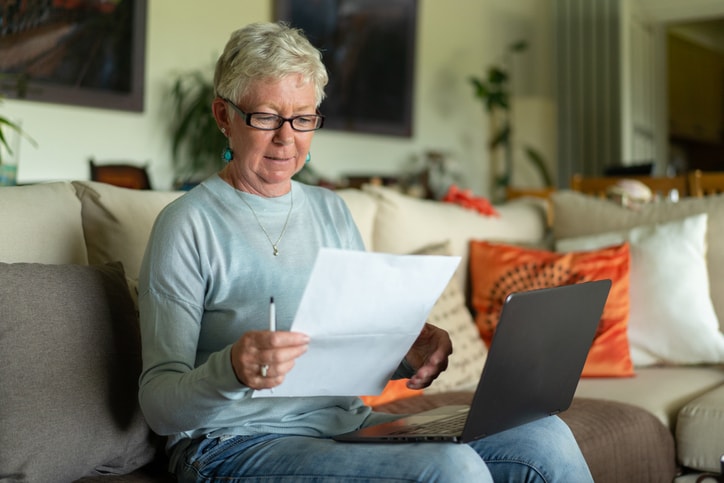When it comes to caring for loved ones or clients with dementia there are a number of overall approaches caregivers can take. One such approach is validation therapy, a technique firmly rooted in empathy.
“Validation therapy (VT) is a communication strategy intended for people with dementia (PWD),” explains Dr. Elizabeth Landsverk, a geriatrician and author of “Living in the Moment: Overcoming Challenges and Finding Moments of Joy in Alzheimer’s and other Dementias.” “The main idea is to compassionately recognize and validate their emotions and perceptions, regardless of what the reality is.”
Here, Landsverk and additional experts break down how validation therapy works, why it can be helpful for both caregivers and patients and more.
“Validation therapy (VT) is a communication strategy intended for people with dementia. The main idea is to compassionately recognize and validate their emotions and perceptions, regardless of what the reality is.”
— Dr. Elizabeth Landsverk, geriatrician and author
What is validation therapy?
Validation therapy involves utilizing empathy and understanding as a communication strategy in the treatment of dementia, with the aim of making the individual with dementia feel acknowledged while preserving their sense of dignity. Designed by American gerontologist Naomi Feil in the 1980s, validation therapy is a gentle, empathetic and, yes, validating way to communicate with loved ones and clients with later stage dementia, explains Michelle Feng, a licensed psychologist, specializing in geriatric psychology and medicine and chief clinical officer at Executive Mental Health.
“Feil outlines skills and tools that caregivers can use to ‘get into their world’ and therefore better understand their loved ones needs especially when verbal communication becomes more difficult,” Feng notes.
The beliefs of validation therapy
Per the Validation Training Institute, a nonprofit organization that hosts trainings and continued education based on Feil’s work, practitioners of validation therapy believe:
1. Older disoriented adults, who are often diagnosed as having Alzheimer’s type dementia, are in the final stage of life, trying to resolve unfinished issues in order to die in peace.
2. Their final struggle is important and caregivers, using empathy, can help them express what they wish to express whether it is verbal or nonverbal communication.
3. Once they express things that have often been suppressed for years, the intensity of the feelings lessen, in turn, allowing them to communicate more and withdraw into further stages of disorientation less.
“It may sound counterintuitive for caregivers to acknowledge something they know isn’t true, such as seeing a person they know has passed,” says Lucy Andrews, who holds her doctorate in nursing practice and is the CEO of At Your Service Home Care and Brain Guard System International. “But what they’re really acknowledging is that a loved one or person they’re caring for sees and believes it. This is a subtle but significant difference.”
Here, Feil practices validation therapy with a nonverbal patient:
The principles of validation therapy
Here are the basic key techniques and practices of validation therapy, per Andrews, based on Feil’s work:
- Empathetic listening. Caregivers should actively listen in order to understand the emotional need beneath the words.
- Reflecting emotions. Instead of confronting reality, caregivers should echo the emotions the person with dementia is expressing.
- Nonverbal communication. Maintain eye contact, use a gentle tone and appropriate physical touch to convey understanding and empathy.
Additional techniques, Landsverk notes, may be “moving loved ones or patients from crowded and noisy environments to more soothing quiet places, playing calming music and engaging in pleasant conversation.”
Can families and caregivers use validation therapy?
The Validation Training Institute has a number of courses and trainings (many online) for both family and professional caregivers that break down a variety of situations and circumstances.
That said, Andrews notes, there is no licensure required to practice VT. “Family members can use the technique without certification,” she says. “However, training is beneficial for both professional staff and family members to ensure the foundation is set for the effective use of validation therapy.”
For caregivers hoping to implement validation therapy (particularly family caregivers without formal training), it’s important to keep in mind, VT isn’t one size fits all. “Validation therapy involves adaptability,” Andrews says. “Each individual with dementia is unique, and so the approach needs to be tailored to their specific history, preferences and emotional needs.”
Specific examples of validation therapy
Validation therapy is akin to “going with the flow,” Feng explains, adding: “Caregivers can think of it as meeting the person where they are at. The focus isn’t to reorient or correct loved ones or patients. Rather, the goal is to help them feel understood, safe and secure.”
“Caregivers can think of it as meeting the person where they are at. The focus isn’t to reorient or correct loved ones or patients. Rather, the goal is to help them feel understood, safe and secure.”
— Michelle Feng, licensed psychologist, specializing in geriatric psychology and medicine
Here are two examples — the first from Andrews, the following from Landsverk:
Example 1: Mr. Johnson, an 82-year-old man with dementia, sometimes believes he is still a school principal. He gets agitated in the evenings (sundowning), feeling he needs to prepare for the next school day.
Validation therapy approach:
Respond empathetically. Instead of telling Mr. Johnson that he’s retired, his family or professional care provider might say, “You must have been very dedicated to your job as a principal. What was your favorite part about it?”
Engage in his reality/reflect his emotions. The caregiver can engage in a conversation about his experiences as a principal, helping him reminisce and feel valued.
Gentle redirection. After discussing his job as a principal, the caregiver might gently redirect him to a calming evening activity, perhaps related to his past occupation, like organizing books or planning a “lesson” for the next day.
“Using validation therapy in this circumstance helps reduce Mr. Johnson’s anxiety, makes him feel understood and acknowledges his past occupation and smoothly transitions him into a more relaxed evening routine,” explains Andrews.
Example 2: Mrs. Jones’s husband died the previous year, yet she keeps asking where her spouse is.
Validation therapy approach:
Respond empathetically. “Instead of confronting her with the facts each and every time leaving her devastated again and again, show compassion and dance around reality,” says Landsverk.
Engage in her reality/gently redirect. Tell her he went fishing with the guys then alter the conversation by asking about the fishing trips she took with her husband, suggests Landsverk.
Note: One challenge validation therapy can present to caregivers is feeling that they’re lying. “A misconception of validation therapy is that it involves deception,” notes Andrews. “However, it’s more about addressing the emotional truth of the person with dementia.”
How validation therapy can be helpful for people with dementia
Here are a few ways validation therapy can be helpful for adults with dementia, as well as their family and/or other caregivers, according to Feng, Landsverk and Andrews.
1. It can provide comfort
According to Feng, much of what caregivers say to people with dementia, especially later stage dementia, is forgotten. “However, the feeling that a caregiver leaves sticks around longer,” she says. “So a person with dementia may not remember a caregiver but may react positively toward them based on the feeling they have had with them. A lot of the tools within validation therapy can help facilitate that feeling of comfort and connection.”
2. It can help sidestep the upsetting emotions of constant reality checks
While caregivers practicing VT meet patients and loved ones where they are, reality therapy is the exact opposite — and it can be very jarring. “Reality therapy only deals with the facts — it’s Wednesday, March 7, they are in a nursing home, their parents are dead, their children are grown, they are no longer in the workforce, etc.” Landsverk notes. “Confronting the PWD with their actual reality can be upsetting, bewildering and irritating. Additionally, after a few minutes, it’s not uncommon for them to totally forget the explanation and continue insisting that they pick up the children or attend that meeting.”
3. It aids in bonding
Through validation therapy, caregivers engage with people with dementia in their current state, which can promote bonding, Landsverk says. “VT is the basis of aggression diffusion, in that it acknowledges how a person with dementia feels, what they think and does not try to make them understand the world differently than they perceive it.”
4. It can reduce anxiety and agitation
Andrews notes that since caregivers and folks with dementia aren’t struggling to communicate with one another, it can reduce anxiety, agitation and aggression.
“Think of how we sometimes are sure we saw something happen a certain way, like a car accident, and four other people saw the same accident but differently than we did,” she explains. “We remain steadfast that we are sure we saw what we saw and cannot be convinced of anything else. This is the way hallucinations and other brain anomalies show up for people with dementia; they are absolutely convinced their reality is real. So for us to try and convince them it’s not can create anxiety, aggression or withdrawal.”
5. Caregivers are less stressed
According to the Validation Training Institute, for the same reasons above, caregivers are generally “less stressed and frustrated … and the everyday becomes easier.”
The bottom line
Validation therapy is a gentle way of caring for patients or loved ones with dementia, and Andrews notes, it represents a unique shift in dementia care.
“By validating the feelings and experiences of those with dementia, caregivers can provide comfort and understanding, improving the quality of life for their loved one along with more positive interactions,” she says, adding: “Though it requires patience and empathy, the positive impact on both people with dementia and their caregivers is significant. This approach is not just about managing dementia but about connecting with individuals in their most vulnerable moments, affirming their vision and reality.”





